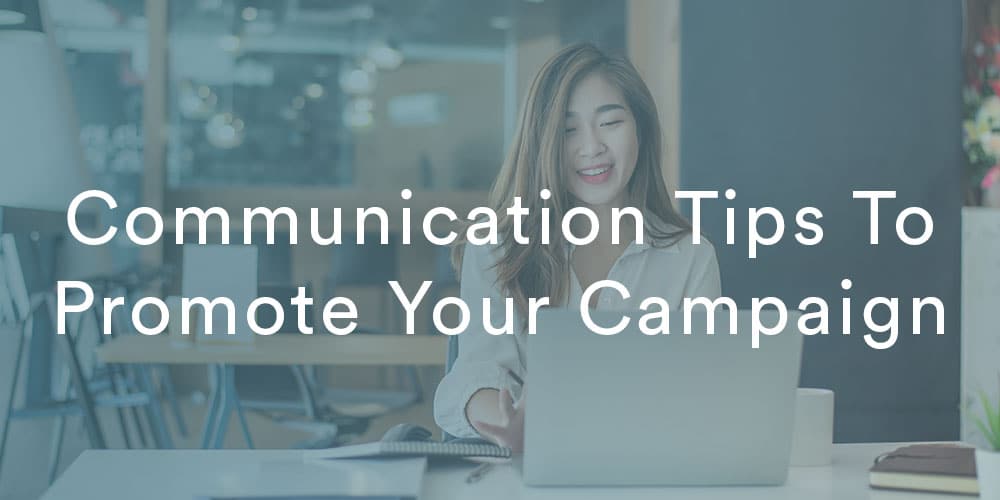Peer-to-peer fundraising is a powerful way to raise funds for your nonprofit. One of the reasons it’s most effective is that people who already know and love your organization fundraise on your behalf—increasing awareness, support, and donations.
In this ebook, we’ll walk you through the planning, execution, and follow-up you need to have your best peer-to-peer fundraising campaign. We’ll include peer-to-peer fundraising tips for hosting an event, using storytelling to promote your campaign, communicating to your fundraisers, and nurturing new supporters.
Make sure to get your free copy of our peer-to-peer worksheet to use as you walk through this guide.
- Getting Started
- Hosting A Peer-To-Peer Event
- Planning Your Campaign
- The Role of Storytelling
- Communication Tips
- Getting New Supporters
- Bonus: Free Worksheet
1. Getting Started With Peer-To-Peer Fundraising

What if you could inspire people to donate to your cause without ever speaking, soliciting, or pitching a single word? Apart from mind-reading, the way most nonprofits have forayed into this fundraising funnel has been through positive peer pressure using peer-to-peer fundraising campaigns.
How Peer Pressure Could Drive Your Peer-To-Peer Fundraising Efforts
Peer-to-peer fundraising (sometimes abbreviated as P2P) gives the opportunity for your supporters to raise money from their friends directly to your organization.
Peer-To-Peer Fundraising Terms & Definitions You Need To Know
- Peer-To-Peer is when fundraisers invite people in their network to give to their team and then funnel the donations to your organization. These may be labeled as campaigns, causes, or sometimes events.
- A Peer-To-Peer Team is a place for a team member to raise money and invite people in their network to donate. Typically a team member can set their own financial goal, team name, team picture, and tagline/bio.
- A Peer-To-Peer Team Member is someone who names the team, sets a goal, and invites people in their network to give. They are also known as a fundraiser or social fundraiser.
- A Peer-To-Peer Event is the name some peer-to-peer fundraising systems refer to as the campaign. Sometimes a peer-to-peer campaign has an event attached to the goal. In this case, a donor would support or sponsor either a team member or a team that may participate in the event. Examples: 5k run, march, strike.
What Are The Benefits of Peer-To-Peer Fundraising?
Due to the amount of people a peer-to-peer fundraiser attracts, the potential for fundraising is huge. Another related term is crowdfunding. Peer-to-peer fundraising and crowdfunding are effective approaches to raising funds for your organization because it leverages the networks of your supporters.
But there are a few questions to ask yourself before you dive in. We’ll use them to start building what the Nonprofit Times calls the “Peer-To-Peer Business Case.”
If you’re planning a strictly online-based peer-to-peer campaign (i.e. no corresponding event, like a 5k), the first topics to consider are time, training, and budget. Running a campaign with so many pieces involved can be a lot to manage, but with the right preparation and platform, you’ll be well-equipped to expand your supporter base and bring in the funds your organization needs to do more good.
Questions To Ask Before Starting A Peer-To-Peer Campaign
There are a lot of great peer-to-peer fundraising ideas to get your creativity moving. Once you decide on an idea, consider a few of these questions to home in your focus:
- Is the idea unique and appealing?
- Does it leverage our organization’s strengths?
- Does it have year-over-year appeal? Is it scalable if it grows next year or next week?
- Do we have the resources (time, personnel, skills) we need to execute this well?
10 Peer-To-Peer Fundraising Ideas To Supercharge Your Campaign
2. Hosting A Peer-To-Peer Fundraising Event

In this section, we will explore the idea of throwing a peer-to-peer event with your campaign. Not every peer-to-peer campaign needs to have an event to partner with it, but many nonprofits do choose to have one. However, there are several logistical questions to consider if you’re planning your own nonprofit peer-to-peer fundraising event.
Peer-To-Peer Fundraising Event Expenses
Any fundraising event – no matter the size – has a tremendous amount of details to consider. Following are a handful that many people overlook – often until it’s too late.
Here are some potential expenses you may incur from your fundraising event:
- Food and drink for volunteers, staff, and participants.
- Portable restrooms if the event is outdoors.
- Venue costs for indoor or partially indoor events.
- T-shirts for either staff or attendees or both.
- Overtime pay for hourly staff members.
- Cleanup costs. Most times, fundraising events require a significant amount of cleaning during and after the event. This can incur additional cost.
- Swag bags featuring marketing collateral for your organization and the specific event.
Should You Plan A Peer-To-Peer Fundraising Event?
Your brainstorming whiteboard should be full of peer-to-peer fundraising event ideas to consider. Ironing out some of these ideas may actually guide your team to decide whether you can realistically facilitate a peer-to-peer event within budget.
Sometimes it may be more financially sound to consolidate your efforts into an online peer-to-peer campaign and skip out on an event-based campaign. Other times, there are external circumstances that make an in-person event difficult or impossible, like the 2020 COVID outbreak. Think through some of these guides to see what works best for your goals.
If you decide to execute your peer-to-peer campaign completely online, check out our guide to planning a virtual peer-to-peer fundraising event.
How To Plan A Virtual Peer-To-Peer Fundraising Event
3. Four Steps To Starting Your Peer-To-Peer Plan

By this point, you should have thought through what type of peer-to-peer campaign to launch and have considered pairing it with an event.
Now we’re getting into the nitty-gritty. We’ll share some peer-to-peer tips for actually planning your campaign. Let’s talk about the four steps you need to take to plan: set fundraising goals, determine the timeline, find a platform, and recruit team members.
1. Set Your Fundraising Goals
Before you set your peer-to-peer fundraising goals, you’ll need to determine where the raised funds will go. Then you can determine how much money you want to raise through your campaign.
What are you raising funds for? If you’re a nonprofit that provides affordable medical care in the developing world, is this campaign for a specific area, city, or country? Or is it for a certain kind of equipment, training, or addition staff? This goal should be clear – first and foremost – and able to answer the question, “What is the money going toward?”
After pinning down exactly where the money is going, the next step is to determine that wonderfully all-inclusive financial goal.
Because that financial goal is so central to fundraising, we have a couple notes to consider.
If you’re organizing an event, make sure your fundraising goal at least covers the cost of throwing the event. Imagine: all that planning, preparing, just to find out the money you’ve raised got eaten up the event budget. Bummer news for both you and your donors! Make sure your budget makes it into your fundraising goal.
It’s also important to make sure the fundraising goal is attainable.
Some crowdsourcing services – like Kickstarter – don’t even transact the financial gifts until the goal is met. The point? Way more value and momentum are created from a fully funded project. Like 80% of New Year’s resolutions, no one wants to see their goals fail.
Time to give your goals some skin. One of the best ways to motivate someone to donate is to give clear, relatable results that can be tied to donation amounts.
2. Determine The Start & End Dates For Your Campaign
Setting an end date for your peer-to-peer campaign allows people to see the finish line (sometimes literally). This finality can actually spur some to donate earlier. It can also inspire fundraisers to really push hard within the last few days.
Try to set a time goal that is comfortable, but stretches you a bit. Lock it down into the shortest time you think you could pull off.
3. Find A Good Peer-To-Peer Fundraising Platform
When you’re setting up your campaign, the platform makes all the difference. There are plenty of peer-to-peer fundraising platforms out there, so we encourage you to do some research on your own. If your donor management system has peer-to-peer functionality, that’s a great place to start.
Which Peer-To-Peer Fundraising Platform Is Best For You?
4. Recruit Team Members For Your Campaign
As we’ve laid out since the beginning of this series, team members are at the heart of a peer-to-peer campaign. You can’t really have “peer-to-peer” if you don’t have any peers to begin with. But how do you know who to invite as a team member? We have a few ideas.
Who You Need To Invite To Your Peer-To-Peer Campaign
- Recurring donors. These supporters are invested in your vision. If they’re a recurring giver, that means they believe in your nonprofit’s mission and will likely be eager to invite others as well.
- Recent donors. Anyone who has given within the last year has supported your vision before – they’re likely to do it again. You may not treat them the same as recurring donors, but if you ask them to participate, you may be surprised at the result.
- Repeat team members. Asking team members from previous peer-to-peer campaigns is huge. These people know the flow, and, if they had success previously, they’re going to be pumped to help out again.
- Regular volunteers. There’s a reason your regular volunteers continue to show up; they believe in your cause! It makes sense to turn volunteers into peer-to-peer fundraisers. If they believe enough in your mission to invest their time, it’s likely they’ll also believe enough to use their platform to ask others to invest in your mission.
How To Turn Volunteers Into Nonprofit Fundraising Champs
While this can sound like a lot to process, you can use your donor management database to run reports with these contacts for you. If you use Kindful, our reporting features should make it very easy to break down contacts into these four groups. After segmenting, you can implement different communication strategies to encourage each supporter to start their own peer-to-peer team. Once you have your teams, the next challenge is making sure to keep your fundraisers motivated.
3 Ways To Encourage Supporters To Start Their Own Peer-To-Peer Fundraising Campaigns
4. The Role of Storytelling In Your Peer-To-Peer Campaign

Stories are everywhere. It seems like in the last few years more and more blogs, articles, and even companies are being created based on this concept of storytelling.
College classes. Conferences. Companies. Endless blogs. All about stories.
Why so much focus on storytelling? Storytelling is central to life. It’s how we remember things. It’s how we relate to others. How we appeal to emotions. How we stick out in the slew of one-liner asks and adages.
If you can get someone to connect to the story you’re telling, you’ve won them. That’s why storytelling is such a powerful way to raise funds for your organization.
Crafting Your Campaign Story
As you may have experienced, not many people are motivated to donate solely from the words “Help us. Donate now.” Not super effective. But tell an amazing story, and that “Help us” is approached with weight and feeling.
When it comes to nonprofit storytelling, there are three main perspectives to take: telling your own story, a story from the field, or a supporter’s story.
After you’ve chosen the story to tell, how you tell the story is the make-or-break point. There are plenty of ways to do this, and myriads of articles, blogs, ideas, and opinions on the best way to tell a story. What’s the best way? Our answer: any of them.
Okay, that may be really vague (and frustrating) if you’re looking for practical tips. We’ll get to that in a moment. The point is: as long as you are thinking about how you’re telling your story, you’re already on the right track. The “story” falls flat when it isn’t approached through the lens of storytelling – when you’re just talking or explaining without a story arc.
5 Steps To Telling Your Nonprofit’s Story
All stories are pretty similar in plot development. Pixar, renowned for the stories they tell (as confirmed by the box office) has a short series on storytelling available to the public. Our friends at the Re:Charity Blog commented a bit on the Pixar formula and how it pertains to nonprofits. It’s a great read.
One of our favorite storytelling guides is from Storybrand’s How To Tell A Story article. In summary, here are the five steps to telling your nonprofit’s story:
- Introduce your character.
- Introduce the problem your character faces
- Your character meets a guide
- The guide gives them a plan and inspires them
- The plan either succeeds or fails
Though this may sound oversimplified, it has been well-received and proven its success.
How To Use Media To Tell Your Nonprofit’s Story
The storytelling tips we provided are for any story. Your campaign is likely going to start with a written story, but the written can be vastly more impactful when paired with video and photo. The bulk of people don’t even read a story unless they see something that compels them to read.
Don’t forget: no matter what mediums you use, make sure you filter the content through the storytelling process. Don’t make a video that only shows someone drawing water from a well. That’s just one piece of the story.
How To Communicate Your Nonprofit’s Story
You’ve crafted your story. Images and videos are in place to supplement your message, and they draw potential donors to read and give. Here’s the most important part:
This is a peer-to-peer campaign. Mobilize your story to the fundraisers!
Packaging your story into smaller, tweet-sized messages, and providing a package of photos, verbiage, and links to team members and fundraisers is vital to your success. If team members can repeat your story with as much prowess as you, your impact will have multiplied without any additional work! That deserves a pat on the back.
Now that you have all the tools you need to be an effective nonprofit storyteller, it’s time to start sharing it. The next step in creating a successful peer-to-peer campaign is promoting.
5. Communication Tips To Promote Your Peer-To-Peer Campaign

Even though peer-to-peer places a lot of the responsibility to fundraise on your supporters, you still have a vital role in inspiring your fundraisers to get out there and spread the word! The more buzz you can create by promoting your peer-to-peer campaign, the more it will inspire teams to reach out and donors to give.
Steps To Making Your Peer-To-Peer Marketing & Communication Plan
When it comes to communicating, tons of people put the cart before the horse. Reaching out – whether via calls, emails, social media – can feel like spinning your tires for a while. This can easily happen when a plan isn’t formed around who you’re reaching out to, how often, and in what ways.
Compiling this data into a plan is the most effective way of getting responses to all your communication efforts.
- Who. What groups are you targeting? Obviously when it comes to social media, this is condensed to your followers. But what about email lists? If you look back at the first section of this ebook, we talked about segmenting recurring, regular, and new donors to isolate those email streams. Also think about who you might need to reach out to individually: friends or family that go above-and-beyond, or contacts at organizations that may want to partner.
- What. What types of communication? Email, social media, phone calls, and mailers are all great places to start. Make sure you base each approach on who you’re targeting.
- When. The “when” in this case is not only at the launch date of your campaign. Do you want teams to grow, and more fundraisers to join the fun? Then you have to consistently reach out in a variety of ways. We suggest making a calendar. Plan on each specific day of the campaign 1) what types of communication you’ll send out, and 2) what topics you’ll write about.
Example: Mon – weekly email to all supporters, social post about weekly progress. Tues – social post an example of successful supporter. Wed – write thank-you email to team members. - News. Okay, that’s not “why” or “how,” but it’s related. Don’t forget about news outlets! If your campaign is gaining traction, or maybe your fundraising event is coming up, or you have a huge amount of supporters in a specific city – reach out to news and press outlets to try to get some free coverage. Add this to your calendar so you can reach out regularly.
How To Communicate About Your Peer-To-Peer Campaign
When it comes time to communicating about your peer-to-peer plan, there are three simple steps to follow:
- Share your story
- Ask
- Stay in touch
Yes, it’s really that simple.
If it’s the first time you’re communicating with that person, share your story with them. After that, ask them to either start a team or give directly to the campaign. Then stay in touch with them. At the end of a communication, invite them to respond back to you or let them know how you’ll stay in touch.
Use your nonprofit’s story when you create your communication plan. You may have a long story for a video, but if you can condense it down to a tweet-sized story, you’ll have content for big communications, small touches, and everything in between.
Make sure you include your story in your peer-to-peer email to most effectively encourage your supporters to create a fundraising team and spread the word about your campaign.
How To Write An Effective Peer-To-Peer Fundraising Email
How To Follow-Up With Your Peer-To-Peer Fundraisers & Supporters
We’ve brainstormed some great ways to continue to touch base with your teams, supporters, and their peers during your peer-to-peer campaign. Remember: the more contact, the more mindfulness of your organization, and the more your story will be shared with others.
4 Communication Methods To Help Spread Your Peer-To-Peer Campaign
- Thank you’s. For donations, pledges, teams formed, registrations filled, etc. Make sure you use the same personalization checklist for all your thank you notes.
- Personal call-outs. Social media and mass emails are the best places for these. Encourage fundraisers to use a hashtag when they post so you can pick the best posts to forward.
- Status updates. How much of your goal have you achieved? How many teams have you gained? How much web traffic are you getting? All of these are encouraging to send in an email or social post. Tip: Add this to your communication calendar for the end or beginning of a week so weekly progress can be seen.
- Direct people. Remind people often how they can get involved. Direct them back to your main page so they can create their own team or donate directly.
These communication tips will set you up to leverage your peer-to-peer campaign to widen your network of supporters even after it concludes.
6. Using Your Peer-To-Peer Campaign To Get New Supporters

If all goes well, a successful peer-to-peer campaign will glean many new donors, hopefully widening your database exponentially. This is perhaps one of the best results a peer-to-peer campaign can give you: more people that know about and support your nonprofit.
What do you do with your new supporters?
It can seem overwhelming to try to dissect the information tied up in all these new contacts. First, it’s important to figure out how you may have received their information.
They may have given because they wanted to support a team/fundraiser or because they wanted to support your organization.
Once you segment out why your new donors gave, there are a few things you may try. You can welcome them with a welcome email nurture series to introduce them to your organization’s mission. This may even cause them to become recurring donors.
To find the new supporters that you gained through your peer-to-peer campaign, most donor management softwares or peer-to-peer platforms have some type of reporting or exporting feature to isolate these new contacts. those two features are some of the most utilized within Kindful. After finishing your campaign, Kindful can filter out new contacts, whether they gave to a team or to the org, how much they gave, and if they’ve given before. These powerful filters can create reports, segments, and lists, so you have the tools necessary to warmly welcome donors into the fold.
Free Peer-To-Peer Worksheet

Ready to start your peer-to-peer fundraising campaign? We’ve got you covered with our free peer-to-peer worksheet. We’ll guide you through the process of planning and executing your best peer-to-peer campaign.